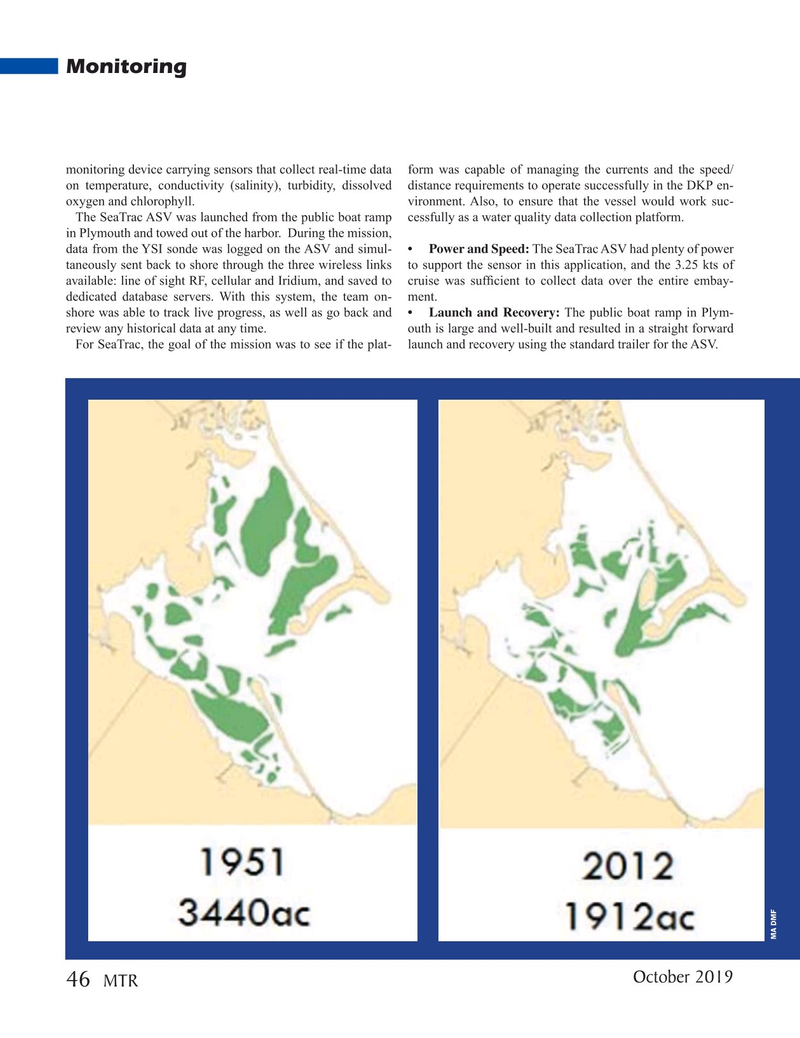
Page 46: of Marine Technology Magazine (October 2019)
Ocean Observation: Gliders, Buoys & Sub-Surface Networks
Read this page in Pdf, Flash or Html5 edition of October 2019 Marine Technology Magazine
Monitoring monitoring device carrying sensors that collect real-time data form was capable of managing the currents and the speed/ on temperature, conductivity (salinity), turbidity, dissolved distance requirements to operate successfully in the DKP en- oxygen and chlorophyll. vironment. Also, to ensure that the vessel would work suc-
The SeaTrac ASV was launched from the public boat ramp cessfully as a water quality data collection platform.
in Plymouth and towed out of the harbor. During the mission, data from the YSI sonde was logged on the ASV and simul- • Power and Speed: The SeaTrac ASV had plenty of power taneously sent back to shore through the three wireless links to support the sensor in this application, and the 3.25 kts of available: line of sight RF, cellular and Iridium, and saved to cruise was suf? cient to collect data over the entire embay- dedicated database servers. With this system, the team on- ment.
shore was able to track live progress, as well as go back and • Launch and Recovery: The public boat ramp in Plym- review any historical data at any time. outh is large and well-built and resulted in a straight forward
For SeaTrac, the goal of the mission was to see if the plat- launch and recovery using the standard trailer for the ASV.
MA DMF
Images: MA DMF
October 2019 46
MTR
MTR #8 (34-49).indd 46 10/8/2019 9:57:48 AM

 45
45

 47
47
